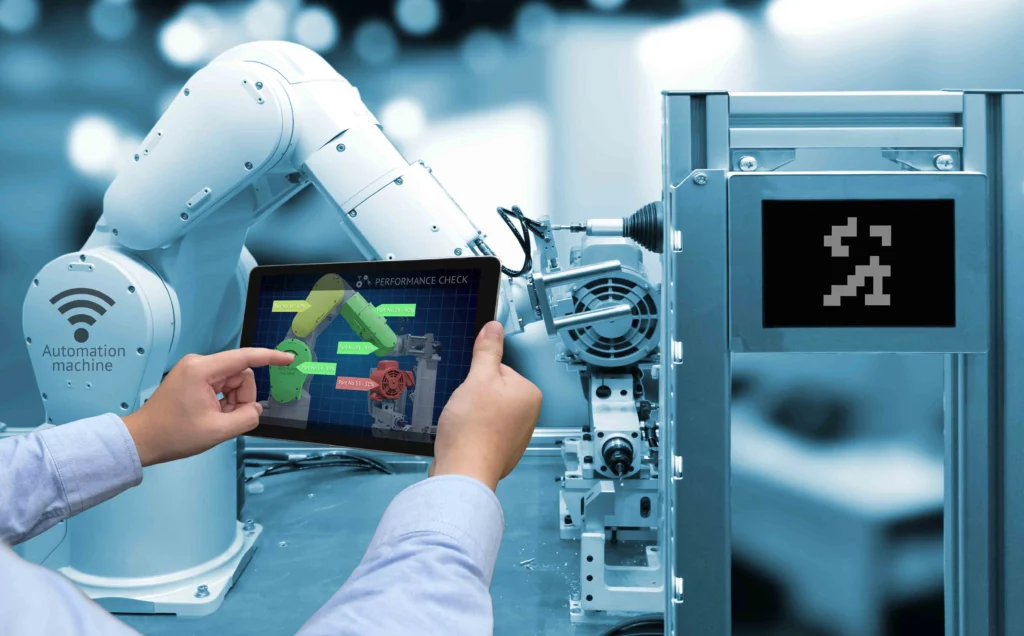What is Predictive Maintenance and Why Does Your Business Need It?
Predictive maintenance has become an essential strategy for modern businesses. By implementing advanced technologies like digital twins and data analysis, this technique not only prevents failures but also optimizes the performance and lifespan of assets.
What is Predictive Maintenance?
Predictive maintenance is a proactive maintenance strategy that uses data analysis tools and techniques to detect anomalies and potential defects in equipment. This allows for problem-solving before major failures occur, ensuring operational continuity and reducing costs.

Comparison with Preventive Maintenance
Preventive and predictive maintenance are two proactive approaches with key differences Get to know them!
Approach
- Preventive Maintenance: Based on a fixed schedule, carried out at regular intervals regardless of equipment condition.
- Predictive Maintenance: Based on monitoring the actual condition of assets, using sensors and data analysis to predict maintenance needs.
Costs
- Preventive Maintenance: Lower implementation costs but may lead to unnecessary maintenance.
- Predictive Maintenance: Reduces long-term costs but requires higher initial investment in technology and training.
Efficiency
- Preventive Maintenance: Does not always consider the current condition of equipment, which can result in premature or late interventions.
- Predictive Maintenance: Allows for just-in-time maintenance scheduling, maximizing asset lifespan and reducing unplanned downtime.
In Conclusion, How Does Predictive Maintenance Compare to Preventive Maintenance? Predictive maintenance is based on the real condition of assets and uses advanced technology to predict failures, while preventive maintenance is performed at regular intervals without considering the current condition of the equipment.
Digital Twins: How Are They Related to Predictive and Preventive Maintenance?
In predictive maintenance, digital twins are used to analyze data and predict failures before they occur. In preventive maintenance, they help plan interventions based on simulations and historical data analysis.
Importance of Predictive Maintenance for Businesses
Predictive and corrective maintenance are fundamental for businesses for several reasons:
Reduction of Operational Costs
Anticipating problems before they occur significantly reduces operational costs. Companies can avoid unnecessary maintenance and prolonged downtime.
Improvement of Performance
Predictive maintenance allows for scheduling interventions at optimal times, maximizing asset lifespan and improving overall machinery performance.
Increase in Productivity
By reducing downtime and repair costs, companies can increase labor productivity and overall efficiency.
Asset Management
Provides strategic information for asset management, allowing companies to make informed decisions about maintenance and intervention planning.
Adaptation to the Digital Era
Implementing predictive maintenance is essential for companies looking to adapt to the digital era and stay competitive in an increasingly technological environment.
Most Useful Types of Predictive Maintenance in the Industry
There are several types of predictive maintenance that companies can implement:
Vibration Analysis: Detects changes in machine vibrations.
Infrared Thermography: Uses thermal images to identify hot spots that could indicate problems.
Ultrasound: Detects high-frequency sounds that may indicate wear or failures.
Oil Analysis: Monitors lubricant quality to detect contaminants.
Condition Monitoring: Uses sensors to measure various operational conditions in real-time.
Examples of Predictive Maintenance
Some examples of predictive maintenance include:
Aerospace Industry: Monitoring airplane engines to detect potential failures before flights.
Automotive Sector: Using sensors on assembly lines to identify machinery problems.
Energy and Utilities: Monitoring wind turbines and power plants to optimize performance.
Manufacturing: Analyzing vibrations in heavy machinery to predict failures.
Information Technology: Monitoring servers and IT systems to prevent failures.
Predictive maintenance is a powerful tool that allows companies to optimize operations, reduce costs, and improve productivity. Adopting this strategy, along with preventive and corrective maintenance, ensures more efficient asset management and effective adaptation to the digital era.
JOIN THE NEW REALITY!



